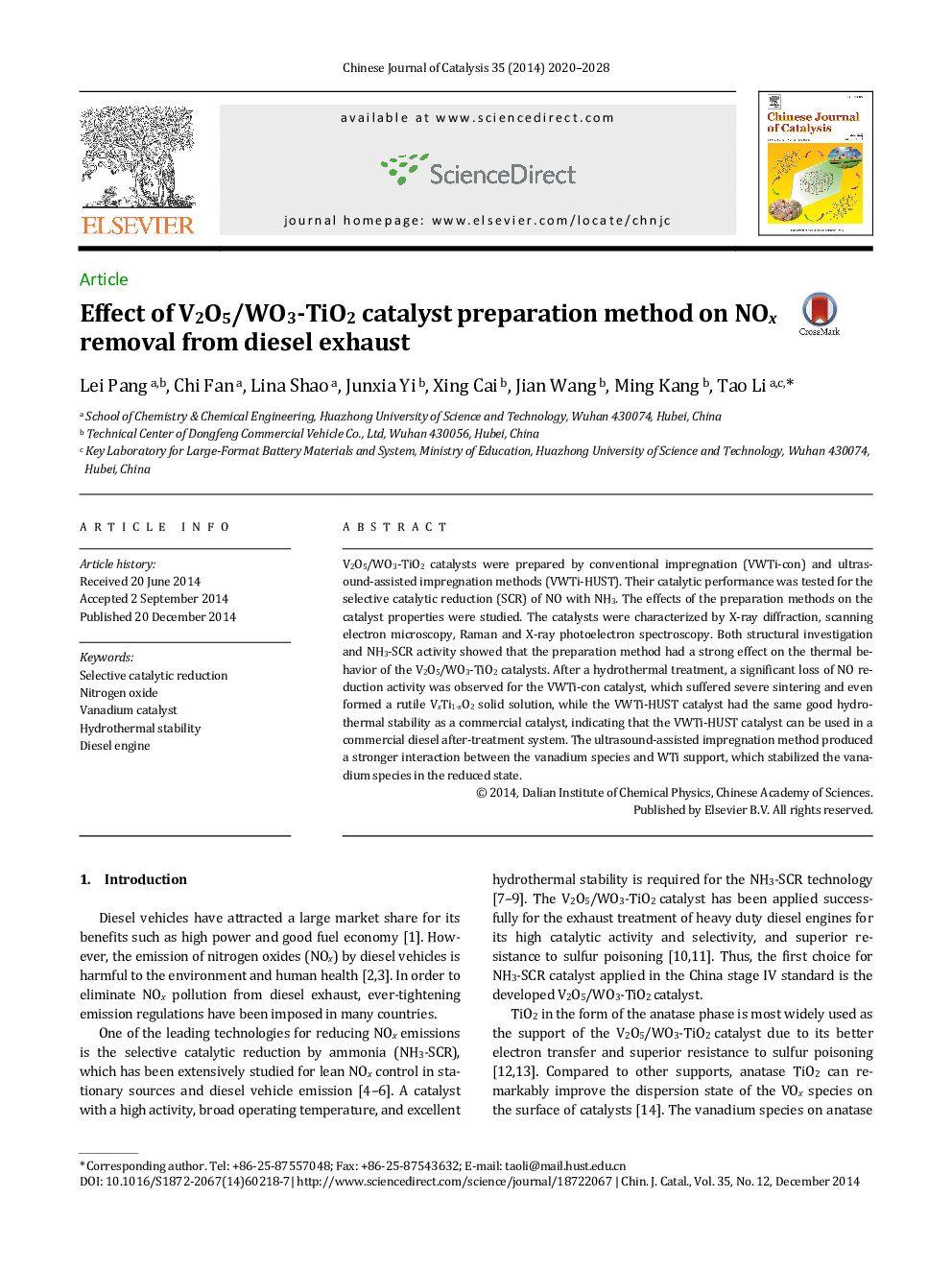| Article ID | Journal | Published Year | Pages | File Type |
|---|---|---|---|---|
| 59099 | Chinese Journal of Catalysis | 2014 | 9 Pages |
V2O5/WO3-TiO2 catalysts were prepared by conventional impregnation (VWTi-con) and ultrasound-assisted impregnation methods (VWTi-HUST). Their catalytic performance was tested for the selective catalytic reduction (SCR) of NO with NH3. The effects of the preparation methods on the catalyst properties were studied. The catalysts were characterized by X-ray diffraction, scanning electron microscopy, Raman and X-ray photoelectron spectroscopy. Both structural investigation and NH3-SCR activity showed that the preparation method had a strong effect on the thermal behavior of the V2O5/WO3-TiO2 catalysts. After a hydrothermal treatment, a significant loss of NO reduction activity was observed for the VWTi-con catalyst, which suffered severe sintering and even formed a rutile VxTi1-xO2 solid solution, while the VWTi-HUST catalyst had the same good hydrothermal stability as a commercial catalyst, indicating that the VWTi-HUST catalyst can be used in a commercial diesel after-treatment system. The ultrasound-assisted impregnation method produced a stronger interaction between the vanadium species and WTi support, which stabilized the vanadium species in the reduced state.
Graphical AbstractV2O5/WO3-TiO2 catalysts were prepared by the convention impregnation and ultrasound-assisted impregnation methods. The hydrothermal stability of the catalysts depended on the preparation method. The catalyst prepared by ultrasound-assisted impregnation showed better hydrothermal stability.Figure optionsDownload full-size imageDownload as PowerPoint slide
